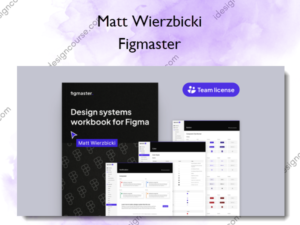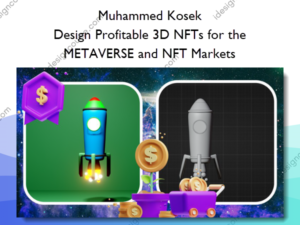User Experience (UX) for Non-Designers – Tom Green
$34.95 Original price was: $34.95.$14.00Current price is: $14.00.
»Delivery: Within 7 days
Description
 User Experience (UX) for Non-Designers Information
User Experience (UX) for Non-Designers Information
User Experience (UX) for Non-Designers is a course that aims to familiarize individuals who are not professional designers with the principles and practices of user experience UX design.
User experience (UX) design is more than just pushing pixels and adding interactivity. It’s a people-centric practice that involves many stakeholders—not all of them professional designers. This course teaches the principles of user experience design from the perspective of a non-designer who needs to work with UX teams, studios, and projects.
Instructor Tom Green explains the four-stage process of UX design, starting with user research—the stage where you build out personas, user scenarios, and user flows. Next, learn about UX conceptualization, where initial ideas are translated into sketches, wireframes, and paper prototypes. Tom then tackles the actual design process.
In this phase, you can see how functional prototypes are generated, complete with imagery, copy, and basic interactivity. Plus, learn about the importance of testing your designs at multiple points in the process and incorporating feedback before handoff to developers.
What You’ll Learn In User Experience (UX) for Non-Designers?
- Introduction
- 1. What Is UX?
- 2. Research: So Who Will Use It?
- 3. Conceptualize: So What Does It Look Like?
- 4. Design: Here Is What It Really Looks Like
- 5. Design: The Design System
- 6. Prototyping and User Testing
More courses from the same author: Tom Green
Salepage: User Experience (UX) for Non-Designers – Tom Green
Delivery Policy
When will I receive my course?
You will receive a link to download your course immediately or within 1 to 21 days. It depends on the product you buy, so please read the short description of the product carefully before making a purchase.
How is my course delivered?
We share courses through Google Drive, so once your order is complete, you'll receive an invitation to view the course in your email.
To avoid any delay in delivery, please provide a Google mail and enter your email address correctly in the Checkout Page.
In case you submit a wrong email address, please contact us to resend the course to the correct email.
How do I check status of my order?
Please log in to iDesignCourse account then go to Order Page. You will find all your orders includes number, date, status and total price.
If the status is Processing: Your course is being uploaded. Please be patient and wait for us to complete your order. If your order has multiple courses and one of them has not been updated with the download link, the status of the order is also Processing.
If the status is Completed: Your course is ready for immediate download. Click "VIEW" to view details and download the course.
Where can I find my course?
Once your order is complete, a link to download the course will automatically be sent to your email.
You can also get the download link by logging into your iDesignCourse account then going to Downloads Page.











